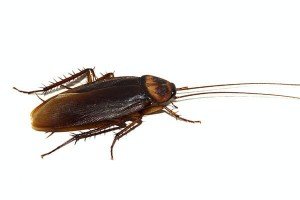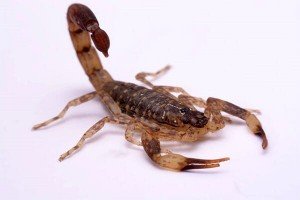Pest Control and Identification

Seasonal Invaders
During the spring and summer months, many species of insects come out of hibernation to mate and flourish. Among them, there are several types that cause special damage to the plants and lawns in our yards. Three such insects are chinch bugs, boxelder bugs, and springtails. With the exception of boxelder bugs, which have been known to hibernate inside houses during the winter, these insects do not typically go indoors. They do not bite or carry disease, but they can kill grass, damage trees and flowering plants, and cause distress when they are seen in large numbers.

Ants
Of the tens of thousands of ant species, only an estimated 25 are known for being household pests. While most ants are harmless, there are some of those 25 pest species that are problematic. Fire ants are known to sting, while carpenter ants can damage the wood of indoor structures, and still other ant species will pester plantlife. Before figuring out what type of ant nuisance you will be confronting, its best to give our team a ring to prevent any harm to your home or office.

Bed Bugs
Bed Bugs are named for the household location where they are most often found and where they dwell – the bed. They can be brought into a home by way of clothing, previously owned beds, couches, or even luggage after traveling. Although these particular pests do not nest as many others do, they do still live in groups wherever they choose to hide.

Bees
Bees are vital for the environment because of their role in pollination, but they still pose a safety threat and can prove deadly for those who are allergic to their sting. They are especially dangerous when they congregate near a home or business where there is a fairly constant flow of people. Honey bees are not often defensive in isolation but their hive calls for more vigilant watch, which is why stings are more likely to occur when people approach hives. Africanized honey bees in particular are more aggressive about disturbances to or near their hive.

Birds
While birds can be our companions, they can also be pests that create serious health issues for those near to their nests or roosting locations. Most often it is their droppings that carry the potential for illnesses like Histoplasmosis, Cryptococcosis, and Psittacosis. Each of the listed diseases begin with infections of the respiratory system through inhalation of the offending bacterium, which is why our team takes the cleanliness of your living/working environment seriously.

Cockroaches
While some species of cockroach are beneficial to the environment, the most common species carry diseases and are difficult to wipe out. Cockroaches enter buildings through doors, drains, and vents, as well as in boxes, furniture, and items brought in from infested environments. Many people are allergic to cockroaches, and the debris they create can trigger allergies. Cockroaches are nocturnal and often go unseen. In fact, it is rare that you would see a cockroach unless their colony has become so overcrowded that some of them must venture out into the open.

Rodents
Sometimes cute and cuddly, these furry critters become pests when they enter your home not as domesticated pets, but as uninvited invaders—as they often do, particularly during the fall and winter months when it grows cold outdoors. Tiny mice can squeeze through a small crack beneath a door, and rats can fit through holes the size of a quarter. Rodents carry diseases, reproduce prolifically, and create a great deal of damage as they gnaw their way through a home.

Scorpions
These desert dwellers are famous for their venomous stingers. Known to hide in everything from beds to unattended shoes, these small arachnids are mostly nocturnal. Despite their dangerous reputation, scorpions are not usually deadly. Their stings can cause swelling and numbness, and in rare cases they can also cause convulsions or deadly allergic reactions. But antivenin is available to counteract any effects that may be caused by scorpion stings. Related to spiders, scorpions paralyze their prey by injecting it with their venom.

Spiders
Spiders are the most commonly recognized variety of arachnids. They are typical dwellers in human homes and buildings, and are oft-feared predators that can actually be beneficial in killing off common household pests—especially fruit flies, common flies, and the other small insects spiders capture in their webs. Spiders paralyze their prey and use digestive enzymes to dissolve it so they can eat. They lay their eggs in sacs made of the same silk as their webs.

Termites
The terror of homeowners far and wide, termites are destructive insects that eat plant-based matter, such as wood, paper, and many common building materials. A colony of termites feeding on a home can cause structural instability and lead to dangerous conditions. Termites can also infest furniture and other wood- or plant-based materials, and they are often spread when such objects are brought into one’s home. Moisture and decaying wood or plants also attract termites. Termites remain hidden until springtime, when they swarm and mate.

Ticks and Fleas
Known for plaguing pets like dogs and cats, fleas and ticks are parasites that live on mammals, birds, and even reptiles and amphibians. Fleas are insects, whereas ticks are arachnids. Both fleas and ticks live off the blood they suck from their hosts. They are known for transmitting diseases such as Lyme disease, encephalitis, and tick fever, and for spreading bacteria, viruses, and protozoa. They can also cause or activate allergies. Ticks remain attached to their hosts for longer stretches of time, while fleas bite and move about their hosts.

